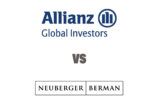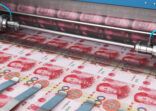
Allocating to high yield right now makes little sense given the fact that current spreads do not sufficiently compensate investors for the recession risk. That was the consensus among the investment managers FSA spoke with.
Since the beginning of the year, there has been no shortage of asset managers who have suggested that fixed income is back as higher yields after last year’s sell-off have created attractive entry points.
However, nearly all of the interest has been concentrated towards investment grade credit, or government bonds, with practically all asset managers eschewing high yield because of the spreads on offer.
The ICE BofA US High Yield Index Option-Adjusted Spread was last quoted at 4.15% versus 10.87%, for example, when the coronavirus crisis first hit in March 2020.
This is despite the fact that practically all the leading signals in the economy such as the yield curve and money supply are pointing towards a recession, which normally would not be good for high yield because of the risk of defaults rising.
This central paradox – that spreads for high yield continue to tighten even as the risk of recession rises – means that few asset managers currently think it is worthwhile allocating to high yield and has left many of them scratching their heads as to what the reasons are for it.
“Quite frankly, it was a bit of an easy theme to take into the year. Generally, when you advance into the cycle and this is a pretty late-stage dynamic we are seeing now, that comes with a potential downturn and obviously what is more fragile in the downturn is high yield. We were conservative to say we prefer the upper quality in the high yield and the investment grade rather than the risky names,” said Philipp Burckhardt, fixed income strategist and portfolio manager at Lombard Odier Investment Managers.
“It’s not exactly clear to me what the catalyst has been. I would say at the end of last year, there was one major risk. That was energy. That was extremely volatile. That risk has gone away. But since then I would argue we haven’t really seen too much positive news. If you look at central banks now, they’re hiking much further than we had expected.”
Factors in favour

This is not to ignore the fact that there are several factors counting in high yield’s favour during this particular credit cycle that may explain its relatively buoyant performance year to date.
For one thing, corporate balance sheets are in a much stronger position than they were during previous credit cycles. When the coronavirus crisis hit and governments around the world responded by flooding the system with liquidity, many high-yield borrowers responded by using the opportunity to refinance and push out their debt maturities.
According to research from Aviva Investors, among the companies that need to refinance before 2025, the majority of them are higher rated issuers, while the more distressed names have maturities that sit between 2025 and 2027.
Secondly, the overall credit quality of high yield borrowers has improved. This has been helped by the fact that the high yield market has already gone through a default cycle back in 2018 when oil prices plummeted, which wiped out a number of speculative grade issuers.
Several secular trends including the rise of the leveraged loan and private credit markets mean also there are fewer triple-C borrowers than during previous cycles.
“Traditional asset investors who invest into high yield were earning maybe around 6%-7% in the past before the rate hike cycle began and now with a lot of IG credit, they are being compensated with similar returns.”
Freddy Wong, head of Asia Pacific, Invesco Fixed Income
Finally, the fact that the primary market has ground to a halt has also supported high yield’s performance this year. Given the fact that a lot of high yield funds are sitting on large amounts of cash, they have had no choice but to put it to work at tighter spreads.
Despite these factors, asset managers FSA spoke with said that they would still prefer investment grade credit at the moment.
“If you look at the rate hikes since last year, a lot of the investment grade credit has already offered quite an attractive yield return in nominal terms,” said Freddy Wong, head of Asia Pacific at Invesco Fixed Income.
“Traditional asset investors who invest into high yield were earning maybe around 6%-7% in the past before the rate hike cycle began and now with a lot of IG credit, they are being compensated with similar returns.”
What is to be done

This is not to suggest that there are not existing pockets of opportunity in high yield.
Henry Loh, head of Asian credit at abrdn, for example said that he favours subordinated paper, particularly from financials, in spite of the recent fallout from Credit Suisse’s AT1 writedown.
“There’s not a lot of appetite generally to go too far down the credit curve. If you ask me how we like to take our high yield exposure, a lot of it is in subordinated paper, whether it’s investment grade corporate issuers or financials that have subordinated issuance,” he said.
Several other asset managers also pointed out that financials was a sector they favoured since banks’ net interest margins were likely to swell as a result of higher interest rates. Other sectors they favoured were generally defensive such as healthcare and consumer non-discretionary.
Generally speaking, most asset managers FSA spoke with said they were reluctant to go too far down the credit curve and favoured the double-B and single-B names, particularly so-called ‘fallen angels’, in other words companies that entered the high yield universe in the wake of the pandemic and still had strong balance sheets.

In terms of geographies, several asset managers said they favoured emerging markets because of the impact of China’s reopening and the potential for a weakening dollar, although this was by no means unanimous.
Overall though, asset managers were consistent in their views that now was not the time to allocate to high yield and said that they would only look to do so when a more risk-on environment returned.
“You probably need a blue-sky environment or a soft landing in order for high yield to resume. If we get a very short, shallow recession, where the market then rebounds, I think that could also be good for high yield,” said Freida Tay, investment officer at MFS Investment Management.
“Against this, I would also think about the wall of maturity that is coming up in 2025 and 2026. If you get something shallow and then there’s a rebound and the high yield companies can refinance ahead of their maturities, that could be a good scenario for high yield.”

















